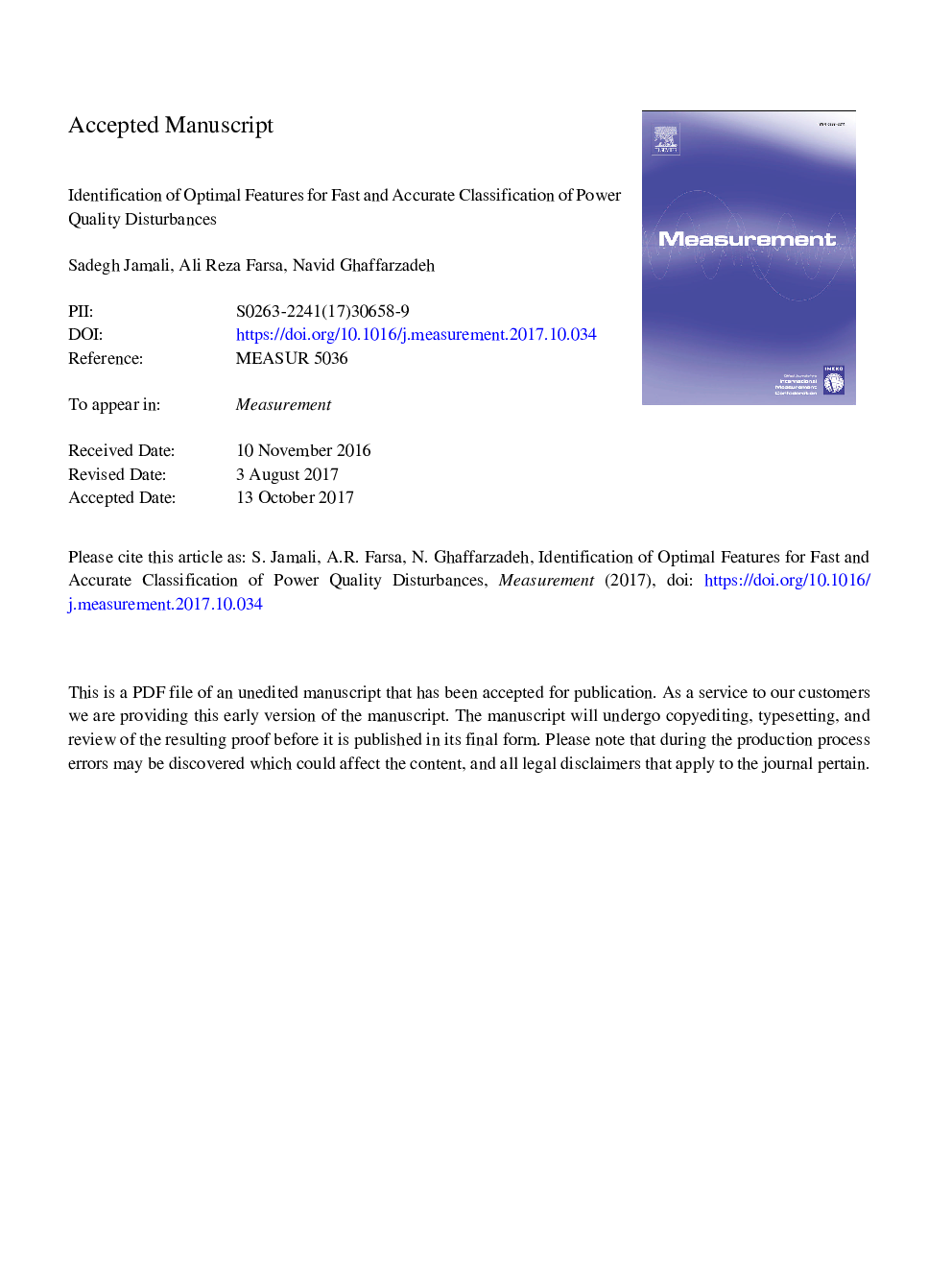| Article ID | Journal | Published Year | Pages | File Type |
|---|---|---|---|---|
| 7122227 | Measurement | 2018 | 17 Pages |
Abstract
This paper presents a classification method for power quality (PQ) disturbances by using efficient features of the PQ signals for an accurate classification with minimum computational complexity. Overall, 16 disturbance classes, including some combined disturbances, are considered based on the IEEE 1159 standard. A 6.4â¯kHz sampling rate is used on 10 cycles of distorted waveforms for the feature extraction by using different transform functions. The sequential forward selection, genetic and maximum relevance minimum redundancy algorithms are used for a precise selection of features. The selected features are input to different classifiers and their outputs are compared to find the best classifier. The effectiveness of the proposed method is studied for de-noised signals and the required features and classifier algorithms are presented for an optimum accuracy (99.31%) in lower computational complexity and higher accuracy (100%) in expense of computational complexity. Some features are presented for high accuracy classification of noisy signals with different noise levels without the requirement of de-noising preprocess. Accuracy of the method is validated by different simulation studies including the 3.2â¯kHz sampling rate for reduced computational complexity. As an alternative test method, the distorted waveforms generated by the Electro-Magnetic Transient Program (EMTP) are accurately classified.
Related Topics
Physical Sciences and Engineering
Engineering
Control and Systems Engineering
Authors
Sadegh Jamali, Ali Reza Farsa, Navid Ghaffarzadeh,
